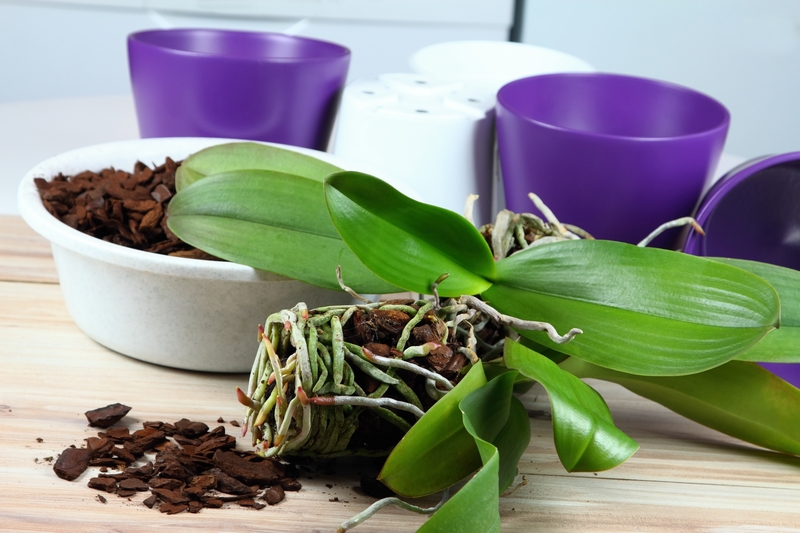Garden Planting Plans for Fall
Posted on 05/10/2024
Fall is a wonderful time to renew your garden. While summer is often seen as the prime growing season, autumn offers plenty of opportunities for planting and preparing for next year. With careful planning and the right plant choices, your garden can flourish even as temperatures start to drop. This article offers a comprehensive guide to garden planting plans for fall, ensuring your garden remains vibrant and productive throughout the season.
Why Plant in Fall?
Fall gardening may seem counterintuitive to some, especially those who associate lush blooms with spring and summer. However, fall offers several advantages:
- Cooler Temperatures: Cooler autumn weather reduces the stress on plants and allows them to establish roots more effectively than in the heat of summer.
- Moisture Availability: Generally, fall brings more rainfall, which helps plants establish without the need for frequent watering.
- Fewer Pests: Many common garden pests and diseases decline in the cooler weather, giving young plants a better chance to thrive.
- Extended Growing Season: With the right plant choices, you can enjoy fresh vegetables and flowers well into the fall and even winter months.

Choosing the Right Plants
When planning your fall garden, consider selecting plants that can withstand cooler temperatures and shorter daylight hours. Here's a list of various plant types suitable for fall planting:
Vegetables
Cool-season vegetables are an excellent choice for fall gardens. They thrive in the low temperatures and are often more flavorful when grown in cooler weather. Consider planting:
- Leafy Greens: Spinach, kale, and Swiss chard are robust and can often survive even light frosts.
- Root Vegetables: Carrots, beets, radishes, and turnips all do well in cooler temperatures and can be harvested late into the fall.
- Brassicas: Broccoli, cauliflower, cabbage, and Brussels sprouts benefit from cooler weather and can often withstand cold snaps.
- Legumes: Peas and fava beans can be planted in the fall for a late winter or early spring harvest.
Flowers
Add color and texture to your autumn garden with fall-blooming flowers and resilient perennials. Some good choices include:
- Mums (Chrysanthemums): A popular fall flower available in various colors.
- Marigolds: These hardy blooms tolerate cooler temperatures and bring bright hues to the garden.
- Pansies and Violas: These can withstand cold weather and cheer up your garden with their vibrant colors.
- Perennials: Sedums, asters, and coneflowers are great options that will return year after year.
Herbs
Many herbs are suitable for fall planting and can be harvested well into the season. Consider:
- Thyme: Hardy and aromatic, it can handle cooler temperatures.
- Parsley: This biennial herb can survive light frosts and often lasts into winter.
- Sage: Versatile and robust, it adds flavor to autumn dishes.
- Chives: These can overwinter in many climates and add a mild onion flavor to recipes.
Preparing Your Garden for Fall Planting
Proper preparation is critical for a successful fall garden. Follow these steps to ensure your garden is ready:
Soil Preparation
Begin by cleaning up your garden beds. Remove any dead plants, weeds, and debris to give your fall crops the best start. Next, enrich your soil:
- Compost: Add a layer of compost or well-rotted manure to improve soil structure and fertility.
- Soil Testing: Test your soil's pH and nutrient levels. Amend the soil as needed based on the results, typically by adding lime to raise pH or sulfur to lower it.
- Mulching: Apply a layer of mulch to retain moisture and suppress weeds. Organic mulches like straw, leaves, and wood chips also decompose and enrich the soil over time.
Planting Techniques
How you plant is almost as important as what you plant. Utilize these techniques for the best results:
- Correct Timing: Plant your fall crops so they have enough time to mature before the first hard frost. Check the average first frost date for your area and plan accordingly.
- Row Covers: Use row covers or cloches to protect young plants from early frosts and extend the growing season.
- Spacing: Be mindful of spacing to allow for air circulation, which can prevent disease and lead to healthier plants.
- Succession Planting: Stagger your planting to ensure a continuous harvest. For example, plant batches of lettuce every two weeks.
Care and Maintenance of Fall Gardens
Your fall garden will require some ongoing care to ensure its success. Keep in mind these maintenance tips:
Watering
While fall generally brings more rain, you should still monitor your garden's moisture levels. Water your plants deeply but less frequently, allowing the top inch of soil to dry out between watering.
Pest Control
Even though fall has fewer pests, you still need to be vigilant. Regularly check for common pests like aphids, cabbage worms, and slugs. Use organic pest control methods such as neem oil, row covers, or hand-picking to manage infestations.
Fertilizing
Give your plants a nutrient boost by applying a balanced fertilizer or fish emulsion, especially for heavy feeders like brassicas. Be careful not to over-fertilize, as this can lead to weak growth.

Harvesting and Enjoying Your Fall Bounty
One of the most rewarding aspects of fall gardening is the harvest. Here are some tips for getting the most out of your autumn garden:
Timing the Harvest
Harvest vegetables at their peak maturity for the best flavor and nutritional value. For example:
- Leafy Greens: Pick young leaves for tender salads or let them mature for cooking.
- Root Vegetables: Harvest when they reach the desired size. Beets and carrots are sweeter after a light frost.
- Herbs: Harvest throughout the season, but be sure to pick before the first hard frost.
Storing Your Harvest
Proper storage extends the life of your harvested produce:
- Root Vegetables: Store in a cool, dark place. Many can be kept in moist sand or sawdust to prevent drying out.
- Leafy Greens: Best eaten fresh, but you can refrigerate them for a few days.
- Herbs: Dry or freeze herbs to preserve their flavor for use throughout the winter.
Final Thoughts
With careful planning and the right techniques, fall can be a productive and enjoyable gardening season. By choosing suitable plants, preparing your garden, and maintaining it properly, you can reap the rewards of a bountiful fall harvest. Whether you're growing vegetables, flowers, or herbs, fall gardening helps keep your green thumb busy and your garden vibrant.
Remember, gardening is as much about the journey as the destination. Enjoy the process, experiment with new plants, and take the time to appreciate the changing beauty of your autumn garden. Happy gardening!



